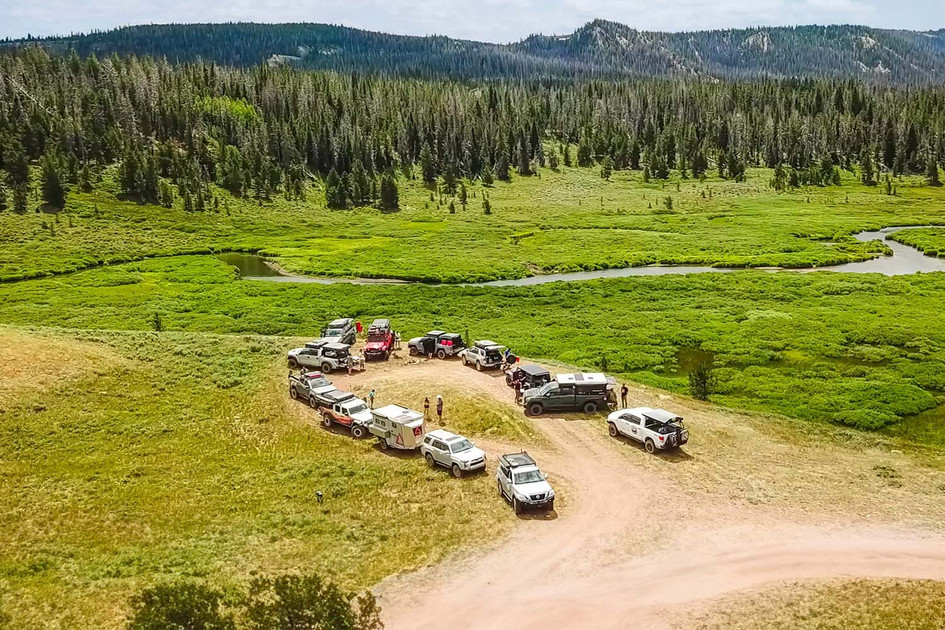New to Overlanding? Here's Everything You Need to Know
Posted by West Valley Staff on 28th Jul 2025
Here’s What You Need to Know Before Hitting the Trail
Whether you’re daydreaming about your first remote campsite or mapping out a month-long journey, overlanding is all about the experience—not just the destination.
If you’re new to the scene, welcome. You’re stepping into a lifestyle that blends adventure, self-reliance, and a whole lot of open-road freedom. At Expedition Superstore, we’ve helped everyone from curious weekenders to hardcore full-timers get their rigs dialed in—and we’re excited to help you take that first step with confidence.
What is Overlanding, Really?
Overlanding is all about vehicle-based travel—usually into remote, off-grid areas—where the journey itself is just as important as the destination. You don’t need a map full of red pins or a checklist of national parks. All you really need is a capable vehicle, some essential gear, and the desire to explore on your own terms.
One of our regulars recently shared how their first trip was just a two-night escape in a state forest with their dog, a basic rooftop tent, and a Jetboil. That humble beginning turned into a year of adventure across the Southwest. That’s overlanding. It's not about how extreme your setup is—it’s about unplugging and making memories, one dirt road at a time.

A Quick Look Back: The History of Overlanding
Overlanding has its roots in early 20th-century Australia. Back then, it meant long-distance, off-grid transport of livestock across the Outback, often by camel or rugged 4x4. It was grueling, practical, and rooted in survival. Over the years, the concept evolved into a form of self-reliant exploration—a way to connect with nature, culture, and the landscape on a deeper level.
Today’s overlanders use purpose-built trucks, SUVs, and vans equipped with modern gear. But the spirit remains the same: travel slowly, tread lightly, and rely on yourself and your rig to take you where few others go.
What Kind of Vehicle Do You Need?
One of the most common questions we hear: “Do I need a tricked-out rig to start overlanding?” Not even close. Your ideal vehicle is the one you already trust to get you where you want to go. What matters more is how you outfit it—and how well you understand its limits.
- Toyota Tacoma, Tundra, 4Runner, and Land Cruiser: Known for their dependability and trail-ready platforms.
- Jeep Wrangler and Gladiator: Ideal for technical terrain and already trail-capable off the lot.
- Ford Bronco & Bronco Sport: A modern player with strong off-road packages and factory support.
- Midsize pickups (RAM, Chevy, Nissan): Perfect for hauling gear with room for growth.
- Vans & crossovers: Excellent for road-based exploration and comfort-first setups.
Bottom line: you don’t need the “perfect” vehicle. You need one that fits your lifestyle, your gear, and your goals. Everything else can come later.

Beginner Builds: What to Upgrade First
Before you max out your credit card, start with a few upgrades that make the biggest impact. You’ll get more capability, more comfort, and more confidence on the trail without overcomplicating your setup.
- Suspension: Upgraded shocks or a lift kit can help with load handling and off-road stability.
- Camp Essentials: Don’t overlook the basics—chairs, a reliable stove, storage bins, and lighting can make the difference between roughing it and enjoying it. Dialing in your campsite setup early will make every trip more enjoyable, especially when traveling with friends, family or children.
- Recovery Gear: Start with a tow strap, traction boards, and a shovel. You’ll thank yourself later.
- Roof or Bed Racks: A solid base for carrying gear, rooftop tents, or recovery tools.
- Portable Power: Power stations, LED lights, and solar panels enhance comfort and flexibility.
We’ve seen beginners hit the trail with just tires and traction boards—and come back with stories of epic sunsets, quiet forests, and a sense of accomplishment that no spreadsheet build list can match.
Beginner vs. Advanced Overlanding
Overlanding isn’t about labels—it’s about experience. You might start with forest roads and dispersed camping weekends. Then one day, you’ll find yourself airing down your tires for a week in Moab or navigating by paper map in the Sierras.
As you grow, your setup will too. That might mean adding a fridge, dual-battery system, full roof rack, or drawer storage. Or it might just mean you get better at packing lighter and smarter. Either way, the progression is yours to define.

More Than Just Gear
We say this often: experience beats equipment. Yes, gear helps—but knowing how to use it, when to push your rig, and how to plan ahead is what makes overlanding rewarding.
We’ve talked with travelers who’ve driven from Alaska to Patagonia with the bare minimum—because they knew how to plan, adapt, and improvise. That’s the heart of overlanding. Take time to learn. Test your skills. Connect with the community and share stories around the campfire. That’s the stuff that sticks with you.
Why Expedition Superstore?
We’re more than a store. We’re overlanders ourselves—campers, weekend warriors, full-time travelers—who live and breathe this world. We don’t just sell gear. We help you build the system that works for you, your vehicle, and your goals.
- Handpicked gear from trusted brands that we’ve tested in the field
- Expert advice to help you prioritize smart upgrades
- In-house installation from techs who understand overland systems
Whether it’s your first lift kit or a full electrical buildout, we’re ready to help bring your overland vision to life.

Ready to Start Your Build?
Book a free build consultation with our expert team. Whether you're starting with the basics or going all-in, we’ll guide you through the best upgrades for your goals and your rig.
Schedule Your Build Consult

